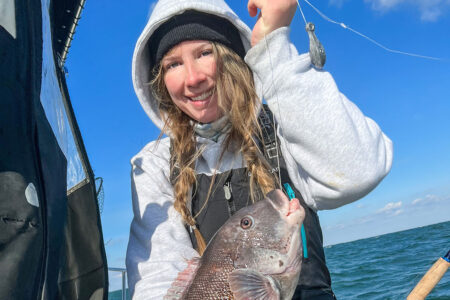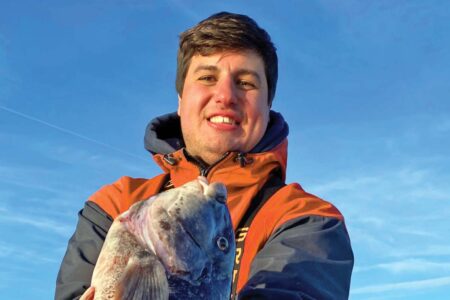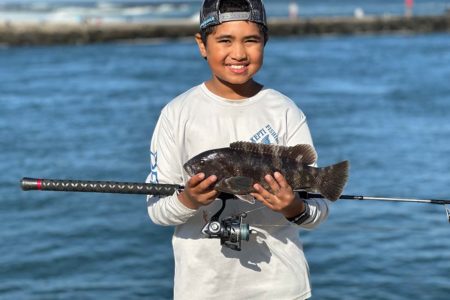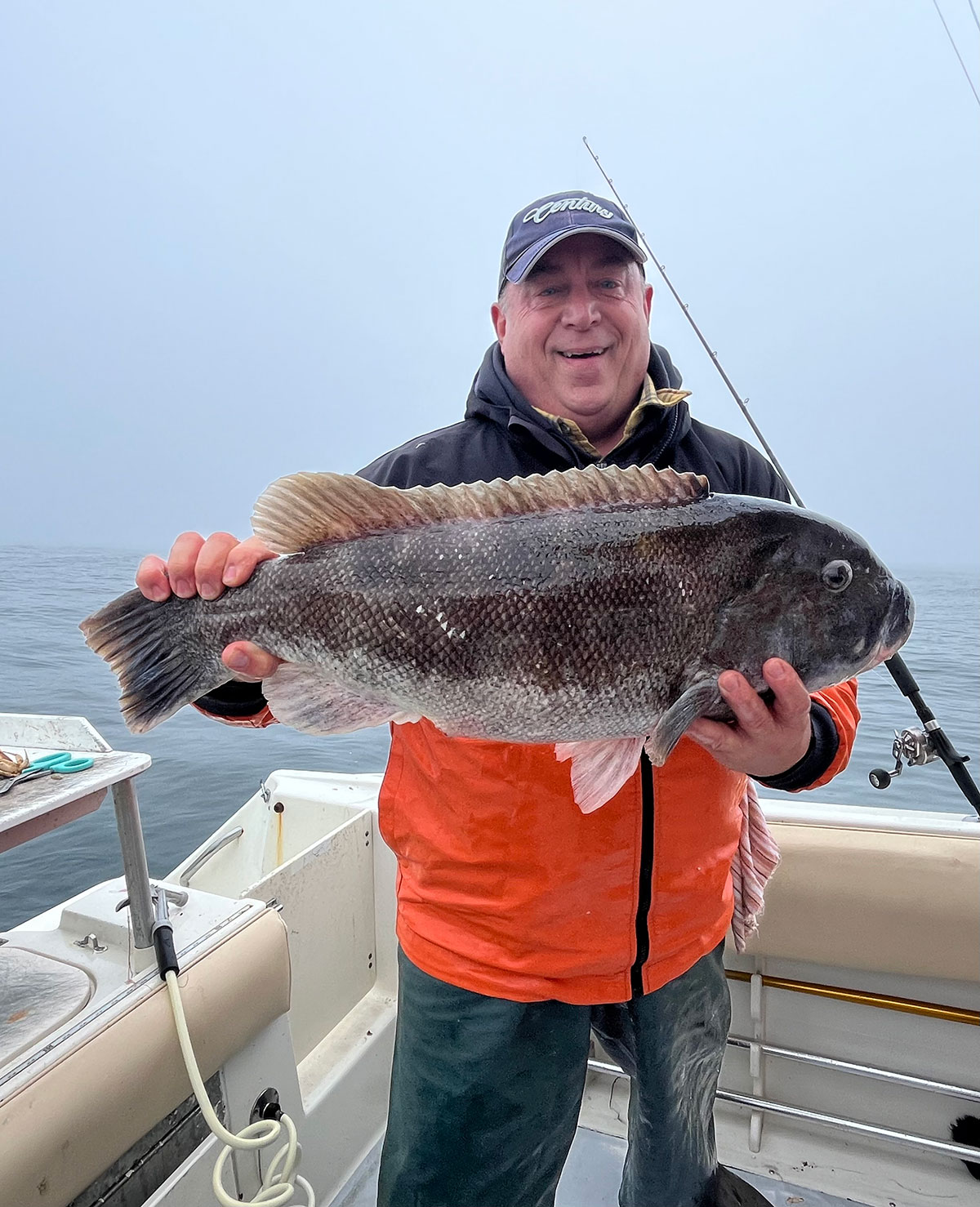
If you’re looking for a personal best beast, now’s the time!
The year was around 1989 or so. I had been togging every Wednesday aboard Captain Gary Fagan’s Big Mohawk III out of Belmar; it was the old black and yellow 100-footer. We had been fishing the Shrewsbury Rocks most of the fall, but now there were Christmas lights on the antennas, and the seasons were changing. And now we had begun running much farther than usual.
This was my first time fishing the 17 Fathoms Grounds, “17” being the dumping ground for the rocks while they were building the NY Subway. My first drop to the bottom with a 6-ounce sinker took forever and wasn’t holding. I was using a 7-foot PENN Power Stick with my PENN Squidder reel and 30-pound test Ande mono line. I was fishing the same way I was a week before, and I did very poorly in this new area.
I did land five blackfish that day between 5 and 8 pounds, but I got smoked by some large fish that I couldn’t even get off of the bottom. I would set the hook and reel, then the fish would head to the bottom and I couldn’t stop them. Essentially, I had set up for failure as the water depth caused trouble for mono and a soft rod. Having no idea what I was doing, suffice to say I was horribly under gunned.
While many skilled toggers may read this info and balk, I do not come from a place of expertise, rather one of humility to share as others have shared some sage advice. So, if I can help you to understand what, how to and why, then maybe your next big fish will end up in the bottom of the net!
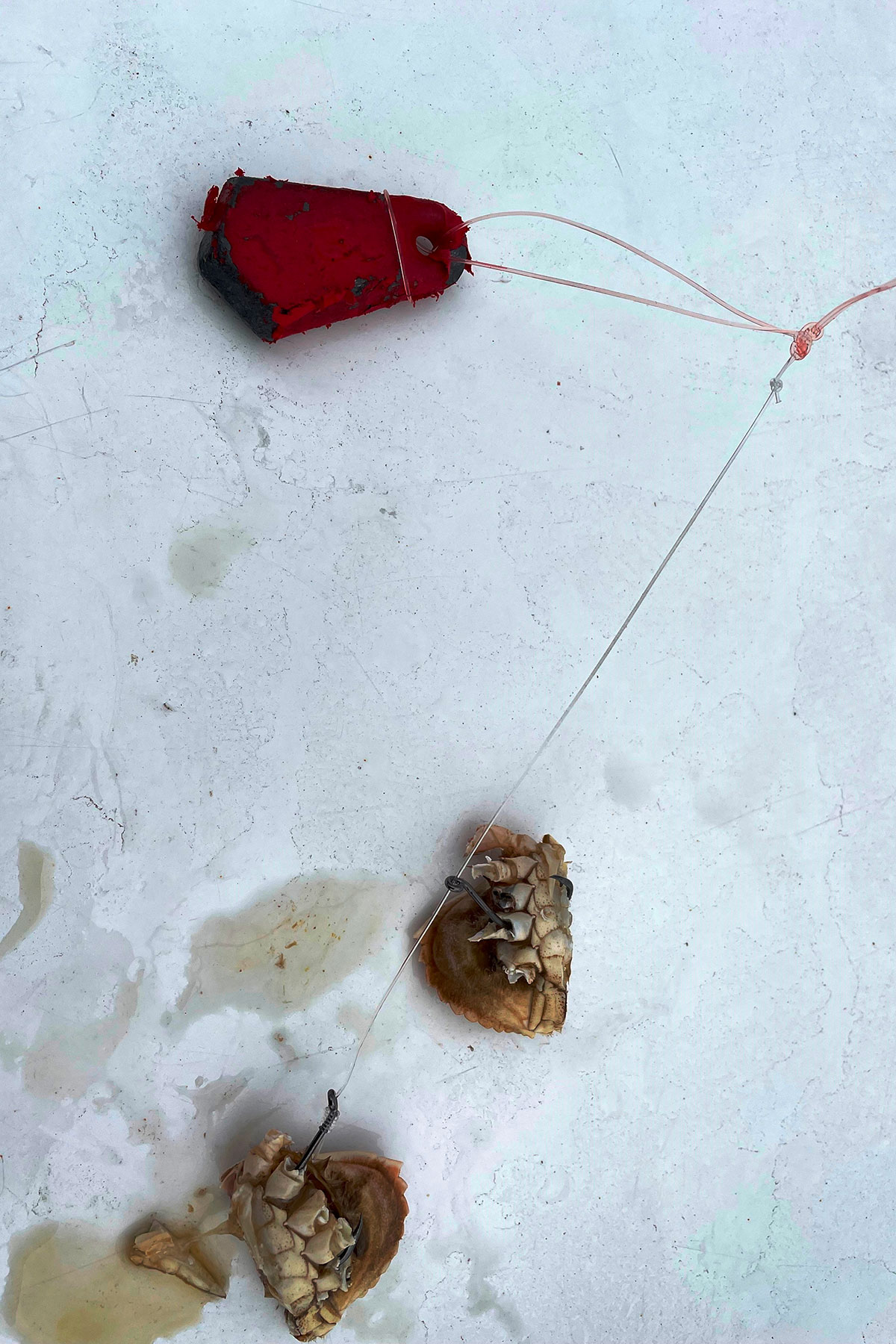
Tog Tackle Evolution
We all know guys that resist change. They have weak links in their tackle, and break off good fish regularly. This time of year is my favorite for catching my largest tog of the season. January is a fickle month weather wise, which is a reason why we plan a charter trip every one of our days off between mid-November and mid-January. Past that, it is day to day, meaning storms and cold temps might just destroy the bite inshore of 15 miles or so. If the fish are not biting for whatever the reason, you either wait until they do or you head off to find a different location with warmer bottom water temps.
Offshore togging is even more susceptible to being cancelled due to heavy winds and seas due to the length of run and exposure to the building seas, so when this near shore bite dies at this time of the year, most of the charter boats get hauled for a few months of dry dock before springtime blackfish season resumes again in April.
We have a group of captains that we charter regularly during blackfish season. They are exceptionally skilled captains with very capable boats. They are dedicated toggers with double anchor trees on their bows. While Spot Locks has made catching tautog a lot easier, it’s just not the same as the real world experience and history of catching big structure-loving blackfish. For many folks, it’s in their blood; many captains who often catch their own white crabs for bait. These captains always have an eye on the weather, and if it allows, we might turn this into a long-range wreck trip. Maybe we leave an hour or two early and we spend a little extra, but the fish of a lifetime awaits!
But truthfully, if you are able to get out during this time of year, any structure in more than 65 feet of water could have your trophy waiting for you. We take the day that God gives us, we work hard at the rail, enjoy our friends and make the best memories that we can.
Over these many seasons, tackle and gear has evolved at an incredible pace; that’s probably the easy part. All you have to do is drop some cash and buy some stuff! I am being sarcastic of course, but this really is the easy part. Braided line, super-light but powerful rods and reels, even hooks are so much better than they were just a few short years ago. But of course, these items aren’t cheap and we’re not by any means saying that you must buy this gear. What I am saying is that I need all the help that I can get to stay up with the better sticks in our area. Maybe you do as well. Some guys are so good that they clean my clock with old #4 Virginia hooks and mono line. Hey, we can’t all be Superman.
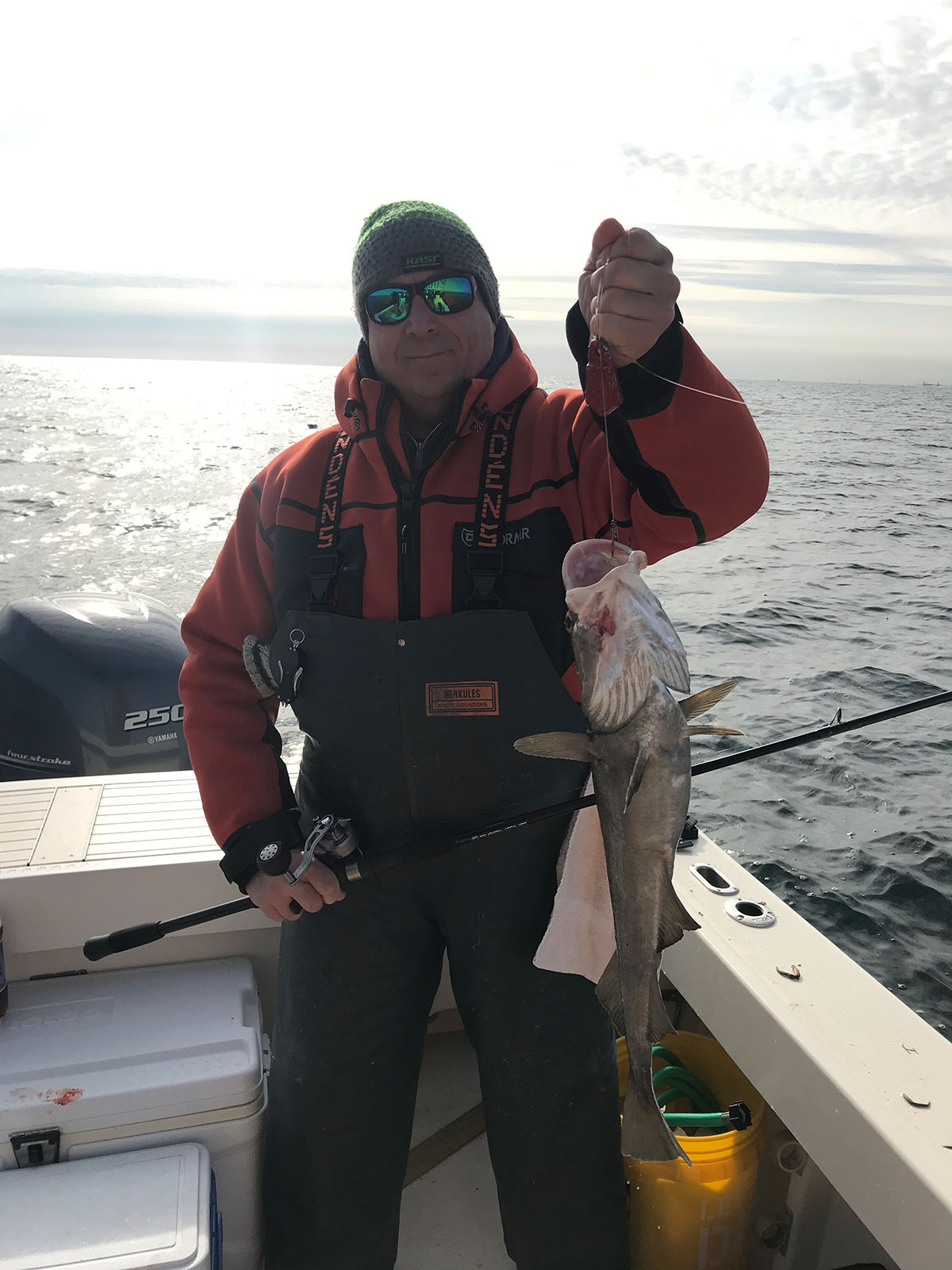
Don’t Spare The Rod
The rod is your tool. It’s the lever that you use to detect bites, set the hook, and wrangle a big ole whitechinner from his hole. It is virtually an extension of yourself. Make it a good one! Being very partial in this department, several years back I began working with Century Fishing Rods, with whom I designed the ProTogger. This rod was designed to fish for blackfish from the nearshore reef sites on out to the offshore wrecks. It flips a 10-ounce weight and a whole crab with ease, but its light as a whisper. Balance is impeccable coupled with a bottom end power that I haven’t found yet the end of yet. This rod is designed for you to fish a slack line easily and set the hook on a monster fish.
When setting the hook on a fish, your form matters. Stay in a position of control and strength. Don’t get out of position by lifting the reel to high, of the butt end of the rod far from your body. Using this rod, I’ve learned to set the hook and fight differently developing a simple movement known as “the efficient hookset.” When you get your bite, pull your top hand toward your chest while pushing the rod butt away from and in front of your hip with your lower hand. Get on the reel and turn the handle very quickly until the fish stops you and you’re tight and locked into an extremely powerful position. This is what a well-designed rod will do for you! Thus, I highly recommend “Frank Mihalic’s ProTogger” from Century.
My Daiwa Saltiga 15 has proven to be a superior tool for this job as well. However, it has been discontinued in the 5.1:1 gear ratio. My personal top choice now is the Shimano Ocea Jigger in a 5.1:1 gear. A Maxel Hybrid has also proven a good reel for the price after some early on design changes. The Okuma Komodo is also another nice star drag reel that has performed very admirably after several years of the beat down. The Okuma reels are available in different sizes, gear ratios and handle configurations as well as left and right-handed configurations direct from the manufacturer.
Your rigging must be equally bulletproof as your tackle. You will discover failure points in your rigging when you lose big fish. I recommend 50-pound test Daiwa JBraid 8 line as a super smooth and multi-color line. A Yucatán knot will fix the braid to my 60-pound test pink Ande mono top shot connection. While not the smoothest knot, it is quick and easy to tie and brutally strong. Leave the top shot about 20 feet long then tie in your rig directly via a Belmar rig.
Leadered hooks are all 5/0 Owner Octopus cutting point hooks tied on 60-pound test Tsunami Pro Fluorocarbon leader material. I use slider rigs tied at about 10 inches long, snafu rigs tied around 16 inches long, or single hook at around 12 inches. Depending on bottom current and bait size, I vary my rigs. Preferring to fish a whole crab, I can put it down and let her eat. The slider rig is great for two halves of a crab, or for pinhooking a crab with no shell. This is very effective when the sea bass are gone from your area. My preference is a medium-sized white crab. Legs and claws off, hooked on a snafu. Step on it and let it soak. If the bite is slow, try fishing a smaller crab on a single hook.
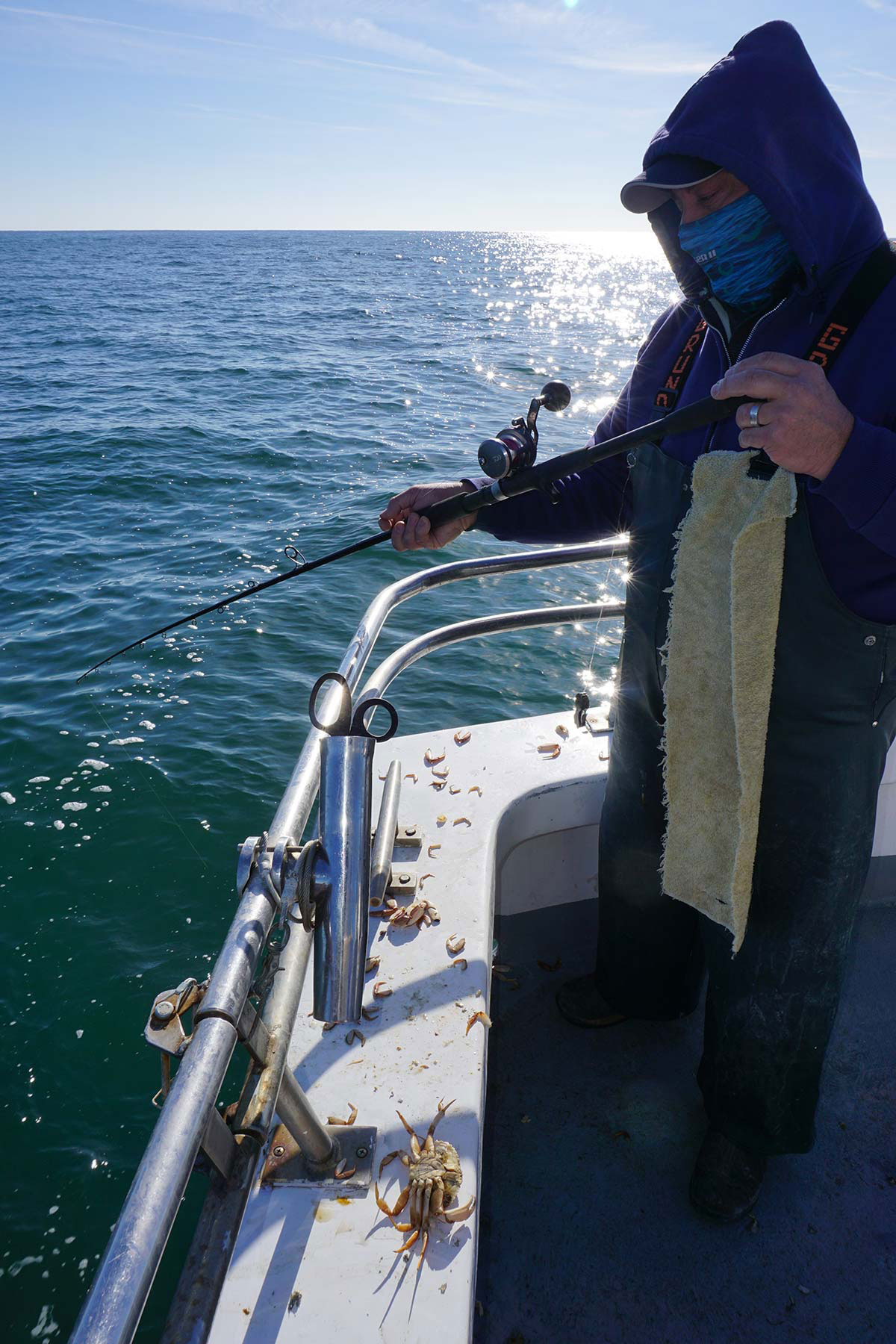
Be A Slacker
Fishing a slack line will let you feel the bait being touched, but also keeps you from lifting your sinker off of the bottom as the boat rises and falls on the swell. I can’t stress it enough, do not lift your sinker! Drag it, maybe, but no bouncing! Dropping your sinker repeatedly on the bottom makes unnatural noises and vibrations underwater. This will often send large tog swimming to my side of the boat.
When you do get a couple of taps, and they just won’t come back and finish it, “shake your bait” inflicting a bit of motion to your bait without lifting it. This small amount of motion can trigger the blackfish into a vengeful attack on your bait. Many guys tap the butt end of the rod. Because of how I hold the rod while fishing a slack line, I prefer to just shake the tip a bit. This moves the bait a bit without moving your sinker. Take a bit of time to find what is most comfortable for you.
| HOW TO – BELMAR RIG |
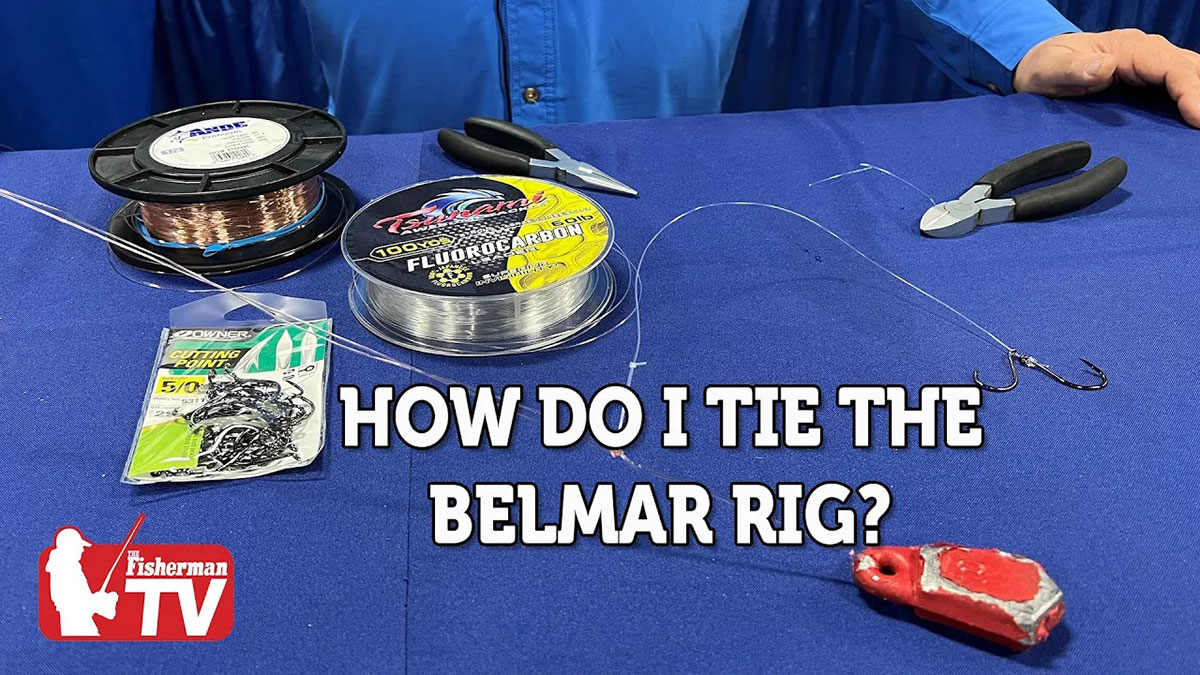
For more information on how to tie the Belmar Rig go to The Fisherman’s YouTube page at www.youtube.com/thefishermanmagazine and search for the title Tautog Tips – “How To” Tie the Belmar Rig which features a 3-1/2-minute instructional piece by Frank Mihalic recorded at the Philadelphia Fishing Show during the winter of 2023. |
Blackfish bite oddly enough on a good day. They often start with a scratch, then a tap, then a sharper, stronger tug. While this action is good, you need to wait until you get that tug so that the hook is in their mouth before you swing on them. Some days this progression happens very quickly, but during cooler months it might take a few minutes. When you get a tap, be patient. Remember that you are fishing decent-sized baits, so if you get a good tug and you miss, don’t pull the bait away. Drop and wait a few minutes until you rebait your hooks.
For winter success, try to develop proper fish fighting techniques. Do the same thing on every fish. Set the hook, get him off of the bottom, and calmly and slowly reel without pumping the rod. Slow down as your fish nears the surface. When your fish is within range of the net, move your rod in the direction of the net, swimming the fish toward the net. Remember, it takes two people to net a fish. Do this on every fish, so as to be ready for that PB (personal best) when it comes along.
When you do hook that jumbo, you will be on autopilot. Take pics and enjoy the moment! Get her in the water as soon as possible. We try to let all females and anything over 8 pounds go. Truthfully, I don’t need more fish in my freezer; what we need is a sustainable fishery for this slow-growing, incredible species of fish!

